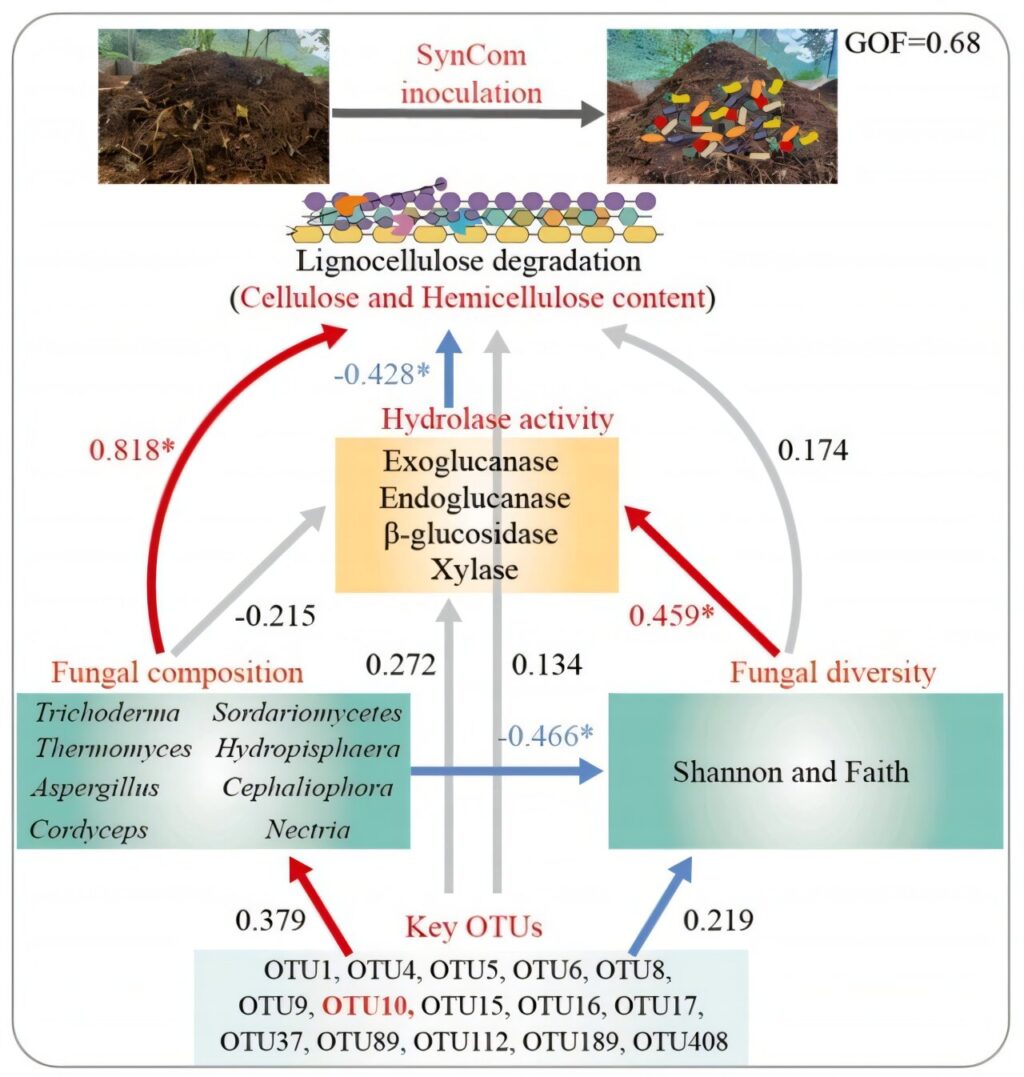
A groundbreaking study led by Prof. Li Dejun from the Institute of Subtropical Agriculture of the Chinese Academy of Sciences has unveiled the potential of synthetic microbial communities (SynCom) in transforming compost materials and boosting crop growth. The research, published in leading journals such as the Chemical Engineering Journal, Bioresource Technology, and Microorganisms, highlights significant advancements in sustainable agriculture.
Composting, a cornerstone of modern agriculture, converts organic waste into valuable fertilizers, enhancing soil quality. The integration of SynCom into this process marks a pivotal shift, particularly in the degradation of lignocellulose, a complex organic polymer. This innovative approach not only accelerates composting efficiency but also enhances crop health by balancing soil microbial communities.
Enhancing Compost Transformation
Prof. Li’s team has identified key mechanisms by which SynCom facilitates lignocellulose degradation during the thermophilic phase of composting. The inoculation with SynCom significantly reduces lignin, cellulose, and hemicellulose content, while boosting crucial degradation enzymes such as laccase, manganese peroxidase, cellulase, and xylanase.
Metagenomic analyses reveal that SynCom enhances microbial metabolic pathways linked to carbohydrate, amino acid, vitamin, and energy metabolism. This optimization at the gene level transforms the structure and function of microbial communities during composting, paving the way for more efficient organic waste management.
Fungal Community Regulation
Moreover, SynCom’s role extends to regulating fungal communities, crucial for compost material transformation. The research highlights an increase in the relative abundance of key fungal genera like Cephaliophora and Thermomyces, alongside a rise in functional groups involved in lignocellulose degradation, including wood-decaying fungi.
“The significant enrichment of the key species Hydropisphaera (OTU10) was confirmed as an important driver for lignocellulose degradation, significantly improving the quality of organic fertilizer after compost maturity.”
Boosting Crop Growth
Beyond composting, SynCom has demonstrated remarkable benefits in promoting crop growth. The research team explored its application in pepper cultivation, noting significant increases in plant height, stem diameter, leaf number, chlorophyll content, and root vitality.
High-throughput sequencing results indicate that SynCom inoculation enriches rhizosphere microbial communities, particularly increasing the abundance of key genera such as Sordariomycetes and Pseudarthrobacter, which are closely correlated with crop growth.
Implications for Sustainable Agriculture
These findings underscore SynCom inoculation as an effective, environmentally friendly strategy for agricultural waste management and crop yield enhancement. As research into SynCom progresses, its potential to optimize composting and agricultural production will likely play a significant role in advancing green agriculture.
“Collectively, these studies highlight synthetic microbial community inoculation as an effective, environmentally friendly approach to agricultural waste management and crop yield enhancement.”
Future Prospects and Applications
The implications of this research are profound, offering promising new strategies and technical foundations for sustainable agriculture. As the global agricultural sector seeks to reduce its environmental footprint, the role of SynCom in optimizing composting processes and enhancing crop resilience will become increasingly crucial.
Further exploration and development of SynCom technology could lead to widespread adoption in various agricultural settings, promoting more sustainable practices and contributing to global food security.
For more detailed insights, the studies by Shuangshuang Chen et al., Qiumei Liu et al., and Tian You et al. provide comprehensive analyses and are available in their respective journals.




